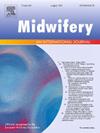围产期抑郁症高危中国妇女互动因素的纵向网络分析
IF 2.5
3区 医学
Q1 NURSING
引用次数: 0
摘要
目的很少有研究采用健康生态模型来了解高危产妇的围产期抑郁情况,而且现有研究仍以横断面研究为主。本研究旨在探讨家庭功能、感知压力、失眠症状、认知反应性分量表(如绝望/焦虑、攻击性、控制/完美主义、回避应对和接受/应对)、正念分量表(包括注意力、当下关注、意识和接受)、生理指标(如血红蛋白、25-羟维生素 D 和血压)之间的相互作用、设计这是一项以人群为基础的纵向队列研究。设置这项前瞻性研究于 2021 年 12 月至 2023 年 1 月在中国福建省进行,为期两波。测量和结果在统计分析中,横断面数据采用同期网络法分析,纵断面数据采用交叉滞后面板网络法分析。产前三个月和产后三个月抑郁相关症状网络中的核心症状分别为注意力(ATT)(强度=1.02)和接受/应对(ACC)(强度=1.19)。所有桥接症状均显示为抑郁(EPDS)(桥接强度 = 0.07 和 0.09)。第一次和第二次调查网络的比较显示,抑郁症状与失眠症状之间的关联边缘权重降低(在第二次调查网络中为 0,diff = -0.18,P < 0.001)。相反,抑郁症状与控制/完美主义之间的关联增加到 0.252(diff = 0.25,P < 0.001)。通过交叉滞后面板网络分析,EPDS(out strength = 3.68,OEI =3.60)被确定为最有影响的症状和最可预测的症状(R² = 0.76)。主要结论横向网络分析与纵向网络分析相结合,揭示了症状之间的作用机制。注意(ATT)和接受/应对(ACC)被认为是产前三个月和产后三个月抑郁相关症状网络中的核心症状,而桥梁症状均为抑郁(EPDS)。在动态网络中,抑郁(EPDS)被认为是最具影响力和可预测性的症状,而感知压力(PSS)和绝望/自杀(HOP)被认为是最易受影响的症状。加强家庭支持和对压力和抑郁(EPDS)等症状的常规筛查对于改善全球孕产妇的心理健康至关重要,尤其是在资源有限的环境中。本文章由计算机程序翻译,如有差异,请以英文原文为准。
A longitudinal network analysis of interaction factors among Chinese women at high risk for perinatal depression
Objective
Few studies have applied a health ecological model to understand perinatal depression among high-risk women, and existing research remains primarily cross-sectional in nature. This study aimed to explore the interplay among family function, perceived stress, insomnia symptoms, cognitive reactivity subscales (such as hopelessness/suicidality, aggression, control/perfectionism, avoidant coping, and acceptance/coping), mindfulness subscales (including attention, present focus, awareness, and acceptance), physiological indicators (e.g., hgb, 25-hydroxyvitamin D, and HbA1C), and depressive symptoms in Chinese high-risk women during the perinatal period.
Design
This was a longitudinal population-based cohort study.
Setting
This two-wave prospective study was conducted in Fujian Province, China, from December 2021 to January 2023.
Participants
We used convenience sampling to enroll 368 pregnant patients from obstetrical clinics and inpatient departments of three tertiary hospitals (level 3) in Fuzhou and Quanzhou City, Fujian Province, China.
Measurements and findings
In the statistical analysis, cross-sectional data were analyzed via the contemporaneous network method, and longitudinal data were analyzed via the cross-lagged panel network method. The core symptoms in the depression-related symptom network during the third trimester and three months postpartum were identified as attention (ATT) (strength = 1.02) and acceptance/coping (ACC) (strength = 1.19). All bridge symptoms were shown as depression (EPDS) (bridging strength = 0.07 and 0.09). A comparison between the first and second survey networks showed a reduced edge weight for the association between depressive symptoms and insomnia symptoms (to 0 in the second survey network, diff = -0.18, P < 0.001). Conversely, the association between depressive symptoms and control/perfectionism increased to 0.252 (diff = 0.25, P < 0.001). Through cross-lagged panel network analysis, the EPDS (out strength = 3.68, OEI =3.60) was identified as the most influential symptom and the most predictable symptom (R² = 0.76). Perceived stress (PSS) (in strength = 2.49) and hopelessness/suicidality (HOP) (IEI = 1.96) were identified as the most susceptible symptoms.
Key conclusions
Cross-sectional network analysis combined with longitudinal network analysis revealed the mechanism of action between symptoms. Attention (ATT) and acceptance/coping (ACC) were identified as the core symptoms in the network of depression-related symptoms during the third trimester and three months postpartum, and the bridge symptoms were both depression (EPDS). In the dynamic network, depression (EPDS) was identified as the most influential and predictable symptom, and perceived stress (PSS) and hopelessness/suicidality (HOP) were identified as the most susceptible symptoms.
Implications for practice
Targeted interventions focused on attention and coping can reduce stress during pregnancy and enhance postpartum well-being. Strengthening family support and routine screening for symptoms such as stress and depression (EPDS) are crucial for improving maternal mental health globally, particularly in resource-limited settings.
求助全文
通过发布文献求助,成功后即可免费获取论文全文。
去求助
来源期刊

Midwifery
医学-护理
CiteScore
4.50
自引率
7.40%
发文量
221
审稿时长
13.4 weeks
期刊介绍:
Midwifery publishes the latest peer reviewed international research to inform the safety, quality, outcomes and experiences of pregnancy, birth and maternity care for childbearing women, their babies and families. The journal’s publications support midwives and maternity care providers to explore and develop their knowledge, skills and attitudes informed by best available evidence.
Midwifery provides an international, interdisciplinary forum for the publication, dissemination and discussion of advances in evidence, controversies and current research, and promotes continuing education through publication of systematic and other scholarly reviews and updates. Midwifery articles cover the cultural, clinical, psycho-social, sociological, epidemiological, education, managerial, workforce, organizational and technological areas of practice in preconception, maternal and infant care.
The journal welcomes the highest quality scholarly research that employs rigorous methodology. Midwifery is a leading international journal in midwifery and maternal health with a current impact factor of 1.861 (© Thomson Reuters Journal Citation Reports 2016) and employs a double-blind peer review process.
 求助内容:
求助内容: 应助结果提醒方式:
应助结果提醒方式:


